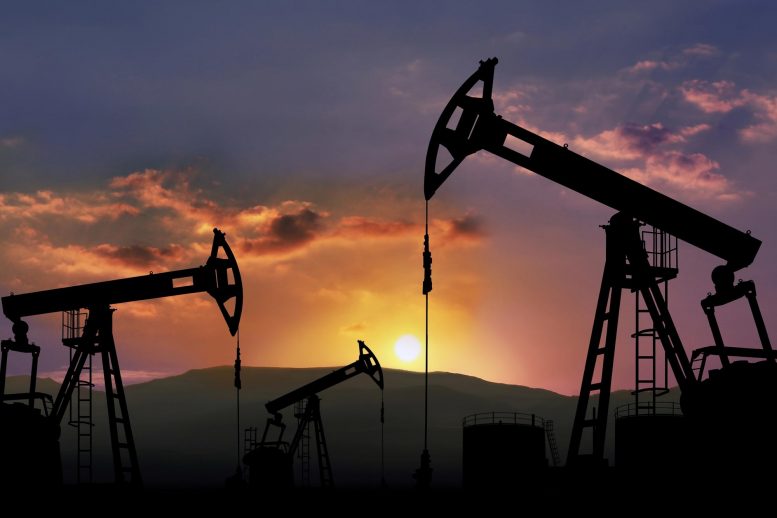
A study provides one of the first estimates of how government subsidies will affect investment decisions for new gas fields in the coming decade.
Researchers at the Stockholm Environment Institute (Somerville and Seattle, USA) and Earth Track, Inc. (Cambridge, MA, USA) examined 16 subsidies and environmental regulatory exemptions, providing one of the first estimates of how government subsidies will affect investment decisions for new gas fields in the coming decade. Their results are published today (July 29, 2021) in the IOP Publishing journal, Environmental Research Letters.
Despite repeated pledges to phase out “inefficient” fossil fuel subsidies, the United States — the world’s largest current oil and gas producer — continues to provide billions of dollars each year to the oil and gas industry through various support measures. The study not only looks at tax incentives, but it is one of the first of its kind to also account for the effects of regulatory exemptions that reduce the costs for hazardous waste and wastewater management for oil and gas producers.
“Besides two federal tax incentives that have existed since 1916, we were surprised to find that less widely recognized forms of government support can also be highly beneficial,” said SEI Scientist Ploy Achakulwisut, a lead author of the paper. “The public ends up footing the bill for services like well closure and hazardous waste disposal – directly with their tax money and indirectly with their health.”
For their analysis, the study’s authors developed a cash-flow model, using Rystad Energy’s UCube database and their own assumptions regarding commodity prices. They then evaluated the effects of 16 subsidies and regulatory exemptions on the expected investment returns of thousands of oil- and gas-producing fields that are projected to be developed between 2020 and 2030.
The results show that, depending on future oil and gas prices and the minimum required rates of return, subsidies (including exemptions) either encourage more extraction than would otherwise be economically viable, or flow to excess profits. In the former instance, subsidies would help lock in higher greenhouse gas emissions, as well as increase air and water pollution and health risks. In the latter case, they would not be fulfilling their stated economic purpose.
For example: at 2019 oil and gas prices – or $64 per barrel of oil and $2.6 per mmbtu (million British Thermal Units) of gas – only 4% and 22% of new oil and gas resources would be subsidy-dependent. In this case, over 96% of subsidy value would flow directly to excess profits. This scenario assumes that investors require a 10% minimum rate of return, or “hurdle rate”.
However, if oil and gas prices are as low as they were in 2020 – or $40 per barrel of oil and 2 per mmbtu of gas – then more than 60% of new oil and gas resources would depend on subsidies to be economically viable. This scenario assumes that investors would require a higher 20% hurdle rate, which may already be the case as risks increase for oil and gas investments.
The authors also examine the extent to which subsidies to fossil-fuel producers affect CO2 emissions by depressing oil and gas market prices and incentivizing higher consumption. They estimate that, under a 10% hurdle rate, the subsidy-induced decrease in oil price could result in an additional 374 million barrels of oil being burned in 2030, adding 150 million tonnes of CO2 emissions.
“In the wake of the COVID-19 pandemic, our results illustrate how different choices about economic recovery and tax reform can shape the US oil and gas industry and energy infrastructure in the years to come,” said co-lead author and SEI Senior Scientist Peter Erickson. “In addition, fossil fuel subsidies can have symbolic effects, since their continued existence may be read by other nations as a sign that the US is not taking its commitments to subsidy reform, or to climate action, as seriously as it should be.”
“Good governance requires transparency on who is receiving subsidies,” added co-author Doug Koplow from Earth Track. “Our study helps to shine a light on the effects of subsidies on the expected returns of US oil and gas producers and their investment decision-making. The same methods could be applied to inform ongoing subsidy reform efforts in other countries.” G7 governments continue to provide billions of dollars in subsidies each year.
Reference: “Effect of subsidies and regulatory exemptions on 2020–2030 oil and gas production and profits in the United States” by Ploy Achakulwisut, Peter Erickson and Doug Koplow, 29 July 2021, Environmental Research Letters.
DOI: 10.1088/1748-9326/ac0a10









Be the first to comment on "US Government Subsidies Boost the Expected Profits and Development of New Oil and Gas Fields"